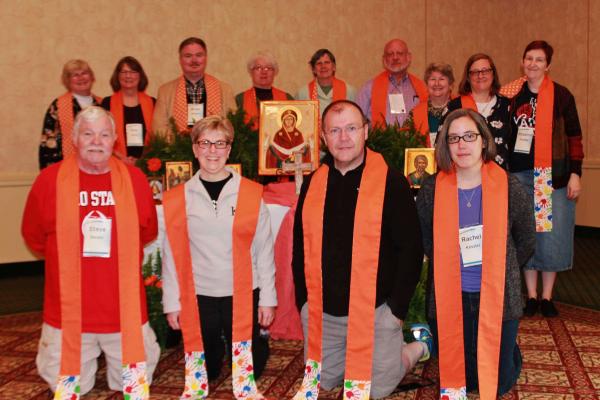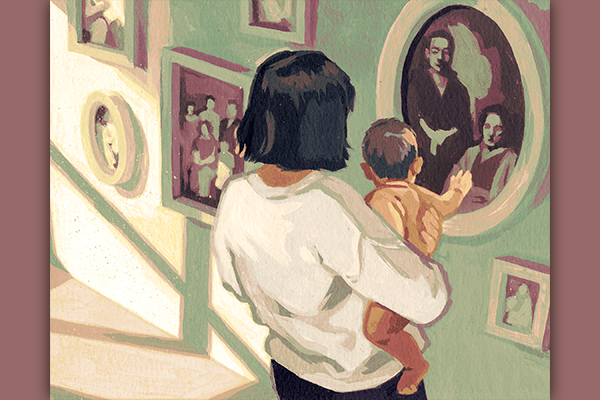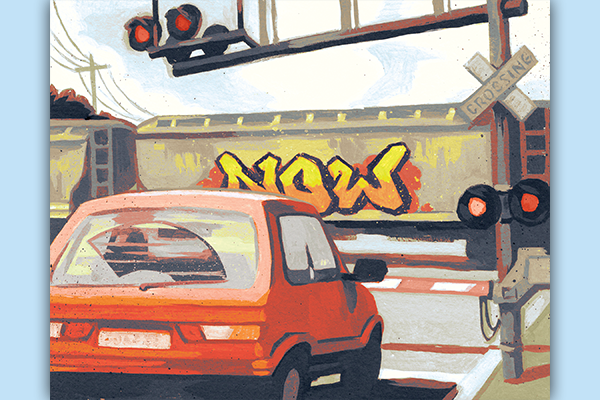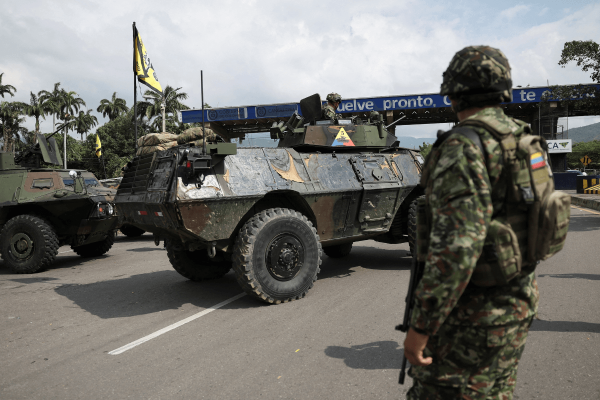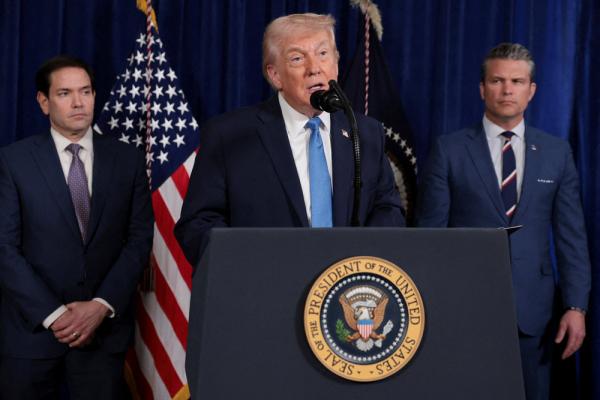Outside of the Ohio State House on Sept. 18, an eclectic group had gathered to demand that the legislators #DoSomething about gun violence. Across the square, I noticed an orange stole draped across a deacon. I have been making orange clergy stoles for gun violence awareness and sending them out to friends and strangers alike since 2016, when a colleague seeded the idea of bringing the #WearOrange movement to church.
The #WearOrange movement began with a group of teenagers in Chicago whose friend, Hadiya Pendleton, was shot to death in a park near her school in 2013. Hadiya was 15. Her murder made the headlines because she had played with her school band at President Obama’s second inauguration celebrations only the week before. First Lady Michelle Obama attended her funeral.
A few weeks earlier, the world was reeling from the murders of 20 small children and six of their trusted adults at Sandy Hook Elementary School in Newtown, Conn.
Three months after Hadiya’s missed 16th birthday, a man with a fake pass killed 12 people and injured eight more at the Washington Navy Yard, a military facility replete with guards and guns. In May 2014, a man killed seven strangers and himself after failing to gain entry to a sorority house in Santa Barbara, Calif.
Two weeks after the first National Gun Violence Awareness (#WearOrange) Day in June 2015, a young man intent on igniting a race war sat quietly through a Bible study at Mother Emmanuel AME church in Charleston, S.C., before murdering nine Christians during their prayer. President Obama sang “Amazing Grace” at the pastor’s funeral.
When publicity began for the second national #WearOrange Day, my friend and colleague, the Rev. C. Eric Funston, posted on Facebook that if he had an orange stole, he would wear it to church the next Sunday. Later, he told me that while we may not think of orange as a standard liturgical color, once it was an accepted alternative to the green of “ordinary time.” What’s more, “amongst those who assign symbolic or allegorical meaning to colors, orange is considered the color of warning and prophecy.”
I heard Eric’s call to raise up the awareness of gun violence within the church that preaches peace and life, and offered to make us an orange stole each. In a minute, I had offered to make one for any member of clergy in our Episcopal Diocese of Ohio who would join us. A little sprig of the #WearOrange movement was born.
By June 5, 2016, the Sunday after the official National Gun Violence Awareness Day, I had made around 40 orange stoles. Most stayed in Ohio, but some were sent further afield.
A week later, a gunman entered the Pulse nightclub in Orlando, Fla., to murder 49 people and injure dozens more. I added a rainbow backing to the stoles I made during Pride Month.
The stole factory is an amateur operation. My sewing machine sits on the dining room table. Most of the stoles go out with one or more cat hairs sewn between the layers. The shade of orange has varied with the availability of fabric at my local stores. The constant is a children’s painted handprint pattern at the ends of each stole.
Last July, I packed a handful of orange stoles and visited the General Convention of the Episcopal Church in Austin, Texas. That Sunday, the Schentrup family from Parkland, Fla., addressed the masses gathered for a public witness and prayer in the park opposite the convention center. Carmen Schentrup was one of 17 people murdered at Marjory Stoneman Douglas High School on Valentine’s Day, 2018.
Against a backdrop of bishops in red chimeres and orange stoles (most much more professionally made than mine), Carmen’s mother, April Schentrup, with a courage that surpasses understanding, challenged us not to wait to grieve with her, but to do something to change the trajectory of our country’s gun violence, concluding, “With God’s help, and with those here today, all things are possible.”
In October 2018, a man killed 11 people at a synagogue in Pittsburgh, Pa.
The United States has mourned more than 2200 mass shootings since December 2012. It is beyond me to discover how many children, young people, residents like Hadiya Pendleton have died since January 2013. I am not a researcher. I am not an activist. I am not an organizer. I am a preacher, and a priest.
In the next week or so, I will make my 100th orange stole. I asked Eric what he thought might happen when this idea began. He responded, in part:
I never thought about or anticipated starting an “orange stole movement” amongst the clergy of the church. But that is what happened. ...Recently, I saw a picture of the Bishop of Washington wearing an orange stole in the halls of Congress!
In three decades of ordained ministry, I’ve preached thousands of sermons, prayed more prayers than I could number, sat at numerous kitchen tables and by too many bedsides, and attended more meetings than I care to remember. The orange stole as a symbol of standing against gun violence and in favor of reasonable gun sale and ownership regulation, simply a little idea for a gesture of witness in my local congregation, seems to have had more far reaching effect than anything else.
There’s an old church camp song that reminds us, ‘It only takes a spark to get a fire going.’ I guess the orange stole was my ‘spark’ to help light up the church’s prophetic witness against gun violence.
Too many lives have been stolen since the orange stoles began but I do not have the luxury of losing hope. No. If the Mothers of the Movement, and the Moms [Who] Demand Action for Gun Safety, and Rep. Lucy McBath (D-Ga.), and Rev. Sharon Risher, and Philip and April Schentrup, and if Hadiya Pendleton’s family and friends can keep the faith that we can change the future for one another’s children, then I should be ashamed to stop now.
Last month, after shootings in Dayton, Ohio; El Paso, Texas; and Gilroy, Calif., our congregation began sending condolence cards to our cousin churches in communities devastated by gun violence. The illustration is a cross formed from orange stoles. They include our pledge, “with God’s help, to work toward the elimination of gun violence and its causes.”
It’s not much to make 100 stoles when up to 100 people die each day in this country from gun violence. It was not even my idea. Thank God, it is not all that I can do. But it is something, a thread that I hold from one prayer to the next, until the chain of gun violence is broken.
Got something to say about what you're reading? We value your feedback!
